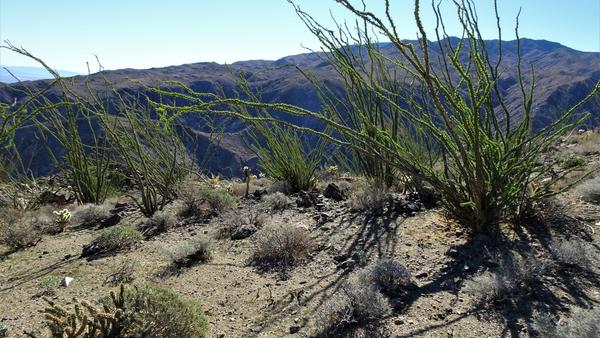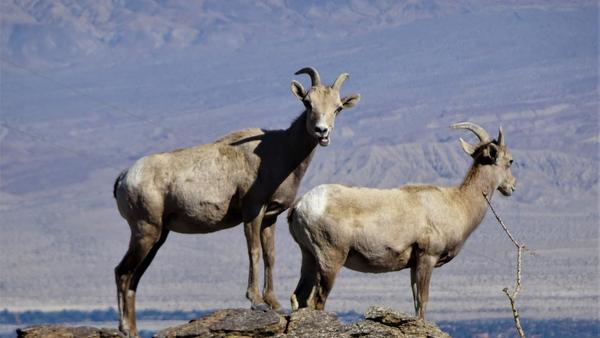But it's a dry heat
“Yeah, but it's a dry heat.” — actor Bill Paxton (line from the movie “Aliens”)
Deserts of this planet include the Gobi and Thar Deserts of Asia, the Sahara, Namib, Kalahari, and Karoo Deserts of Africa, the Atacama Desert of South America, the Great Victoria Desert of Australia (plus nine other somewhat smaller named desert regions there), and the Great Basin, Mojave, Colorado, Sonoran, and Chihuahuan Deserts of North America. Common perceptions for all are that they are hot, dry, wastelands where life is scarce.
The Oxford English Dictionary definition of a desert includes, “A dry, barren area of land, especially one covered with sand, that is characteristically desolate, waterless, and without vegetation.” While most folks would nod in agreement to these descriptions, only one word in the previous two sentences is true. Not all deserts are hot. The Gobi has warm summers but is very cold much of the year. Same for our Great Basin. There are even some areas above the arctic circle that are deserts, complete with sand dunes. Deserts are hardly barren wastelands. Deserts typically include more species of annual plants, more shrub species, more lizards, and more arthropods per area than any other ecological region within the continents where they reside. The one true common denominator is that deserts are dry; mean annual rainfall amounts of less than 10 inches (260 mm) define deserts.
The amount and timing of rainfall a desert receives results in who lives there and the different species’ adaptations. The Chihuahuan Desert extends from the southeast corner of Arizona to Big Bend National Park in Texas, and south through central Mexico. Rain falls in this desert almost entirely during the summer months, spawned from monsoon storm cells originating from the Gulf of Mexico. This desert includes many familiar plants, including creosote bush, honey mesquite, and ocotillo. However, there are many more species unique to this desert, such as Agave lechuguilla (Lechuguilla) and Euphorbia antisyphilitica (Candelilla). As its scientific name suggests, Candelilla was believed by some to have medicinal, anti-venereal disease uses, but its current uses include being a source of wax for candle making. The Chihuahuan Desert has its own tortoise, the Bolson tortoise, Gopherus flavomarginatus; however, it is one of the most endangered reptiles on earth, only found in the wild in a single relatively small reserve in the center of the Chihuahuan Desert in Mexico.
The Sonoran Desert occurs primarily in southern Arizona but occupies a small enclave in California’s Whipple Mountains. This desert can receive rain in both the winter months, when particularly strong storms originating in the Bering Sea break through the western rain shadowing mountains, and like the Chihuahuan Desert, summer monsoons. Characteristic plants include the iconic Saguaro cactus, Carnegiea gigantea, and foothill paloverde, Parkinsonia microphylla. Other, more broadly ranging species found here include creosote bush, honey mesquite, and ocotillo, along with ironwood and blue paloverde. Cacti abound in this desert, perhaps due to its bimodal rain pattern, and perhaps due its proximity to the tropical and subtropical thorn forests that border this desert to the south, where cacti likely evolved to be able to tolerate and then thrive in the extreme aridity of warm deserts. The Sonoran Desert also has its own tortoise — the Sonoran Desert tortoise, Gopherus morafkai.
The Colorado Desert, so named because it borders the Colorado River, is the lowest elevation, hottest, and driest of North American deserts. Rainfall usually comes as sparse winter rains, although some summer monsoons can occur. Rarely, perhaps only once or twice a century, hurricanes will move north up the Gulf of California and drench a small area of this desert. Desert fan palms, Washingtonia filifera, are only found growing in association with earthquake fault zones within this desert. Flat-tailed horned lizards and four different species of fringe-toed lizards, isolated by the boundaries of their sand dune habitat, are also only found in this desert region. As with the Sonoran Desert, creosote bush, honey mesquite, and ocotillo, ironwood, and blue paloverde also occur here. Winters are mild and summers are blazing hot, typically highs averaging between 110-120°F and getting hotter.
The only hotter place in North America is Death Valley, which is surrounded by the Mojave Desert, but because of its low elevation it is climatically more aligned with the Colorado Desert. Heat and sparse rain conspire to make even less rain available to plants and animals, the hotter it gets the more water is evaporated before it can reach the root systems of desert plants. Still, when rainfall is above average, the result can be what the media have termed “super blooms” of annual wildflowers carpeting the desert floor with yellow, orange, white, and purple. Such blooms are uncommon, occurring once or twice a decade, but well worth the wait. Such blooming events in the Colorado and Mojave Deserts are exclamation points that these deserts are not desolate and barren.
At higher elevations and higher latitudes, the Mojave Desert has very cold winters and warm to hot summers, with most of its rain falling during winter, but like the Colorado Desert, with the occasional monsoon showers during the summer. A bit higher average rainfall and, with higher elevations, cooler temperatures which means that more of that precious rain can benefit plant growth. Here the boundary of this desert is defined by the range of Joshua trees, (Yucca brevifolia and Y. jaegeriana), along with blackbrush, Coleogyne ramosissima. As with the previously mentioned deserts, creosote bush and honey mesquite occur here, but ocotillo, ironwood, and blue paloverde do not. Some of the creosote bushes in the Mojave Desert have been dated to be the oldest living plants on earth, nearly 12,000 years old, 4-5 times older than coast redwoods and giant sequoias, and twice as old as the oldest bristlecone pines. The Mojave Desert also has its own tortoise, Gopherus agassizii, although there are a few scattered populations of this species that have been able to eke out a living in the Colorado Desert as well.
Finally, North America’s Great Basin Desert, colder than the other four deserts, has long, frigid winters. This is the only one of our deserts that creosote bush has been unable to exploit. This is sagebrush country, with several species of Artemisia dominating this landscape along with antelope bitterbrush, Purshia tridentata. This is also sage grouse and pronghorn antelope country. Different in almost every way from the four warm-hot deserts, except the one defining characteristic of all deserts – aridity.
The perception of deserts being barren wastelands has made them easy targets for abuse, from indiscriminate off-road vehicle recreation, energy development, trash dumping, and more. Education is the key. "In the end we will conserve only what we love; we will love only what we understand; and we will understand only what we are taught." (Baba Dioum, 1968). A few years back I was leading a Community Science – Earthwatch expedition aimed at understanding the impacts of climate change on the Mojave and Colorado Deserts. One volunteer, Angela Dock, had flown all the way from England to participate in our research. Like any good Brit, she trusted the Oxford dictionary’s definition of what to expect when she arrived. What she found was very different. She captured her transformation in the following poem she wrote on the last day of her stay in the desert.
Ode to the Mojave/Colorado Deserts
by Angela Dock
The desert is a fecund place
bursting with life and gentle song
exploding colors and unexpected magic
where perfume wraps around baked earth
It's a hypnotic space where people dream and souls uplift,
and tiny creatures drift and shift and monumental trees exist,
where mighty Joshuas and massive oaks stand side by side and ghost flowers whisper,
lizards dart and Ocotillos shout resplendent and persist;
where Mojave asters yield their lavender mist
where zebra tails and elusive lions leave their trails.
The desert is not, most definitely not
a desolate place.
Nullius in verba
Go outside, tip your hat to a chuckwalla (and a cactus), think like a mountain, and be safe

